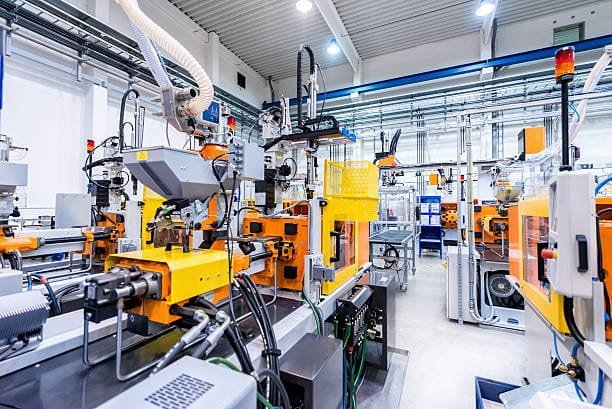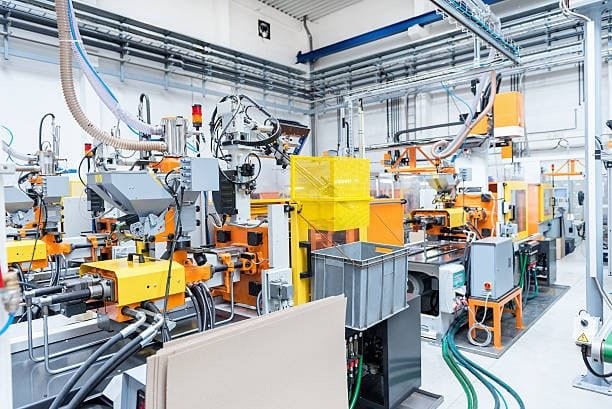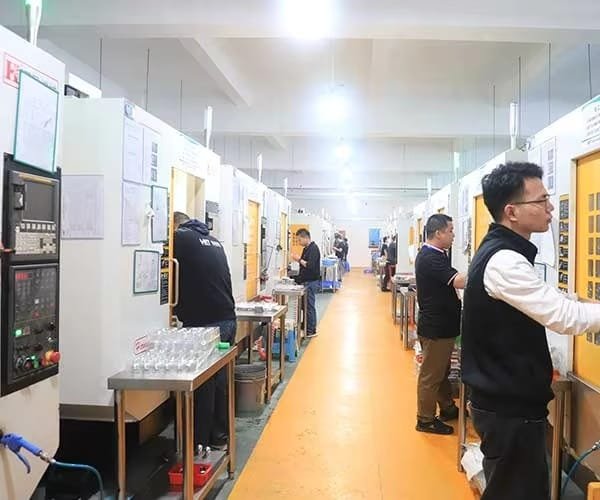Introduction
A futuristic manufacturing process and technique combining the strength and durability of metal with the adaptability of plastic injection molding is metal injection molding (MIM). Because this method can create complicated metal parts with great accuracy and cost economy, it has become rather popular in sectors including aerospace, automotive, medical devices, and consumer electronics.
The ideas of MIM, its benefits, uses, and relative merits with other metal-forming methods are discussed in this paper. By the end, you will be well-versed in the reasons MIM is a transformative tool in contemporary manufacturing.
What is Metal Injection Molding?

Injection of Metal Four main stages define the metalworking technique known as molding:
- Creating a malleable feedstock, metal powder is blended with a polymer binder.
- Injection molding is the process whereby a desired shape is formed from injected feedstock into a mold.
- Debinding is the removal of the binder using thermal or chemical means.
- To get the final density and strength, the remaining metal component is heated in a furnace.
By means of this process, manufacturers can produce complex parts wrought materials that would be challenging or impossible with conventional machining or casting techniques.
Advantages of Metal Injection Molding
MIM presents a number of benefits over more traditional metalworking methods:
- Complex Geometries: MIM makes it possible to create finely detailed, thin wall parts.
- Material Versatility: One can make use of a large spectrum of metals including tungsten, titanium, and stainless steel.
- Excellent mechanical properties, near-full density, and tight tolerances define the final products’ high strength and accuracy.
- MIM lowers labor and material waste than machining, so improving cost-effectiveness.
- Mass production favors scalability since it is perfect for high volume output.
The Metal Injection Molding Process in Detail

1. Feedstock Preparation
The process starts with combining a thermoplastic binder with fine metal powders. Usually comprising 60% metal powder and 40% binder by volume, this mixture—known as the feedstock—is finely powdered metal For simple handling during the injection molding process, the feedstock is next ground into pellets.
2. Injection Molding
Heated and under high pressure injected into a powder injection molding cavity, the ready-made feedstocks is This stage produces a “green part,” which has the form of the finished product but is not yet completely dense, much as in plastic injection molding.
3. Debinding
At this point the binder material is taken out to leave just the metal particles. Solvent extraction, thermal debinding, or catalytic techniques all help to deb bind metal powder particles. This stage is absolutely important since the final sintering process can be influenced by any remaining binder.
4. Sintering
Now called the “brown part,” the debound part is heated in a furnace to high temperatures usually between 1,200 and 1,400°C. The part shrinks by about 15–20% to attain its final density and strength as the metal particles fuse together.
Applications of Metal Injection Molding

MIM finds application in many sectors requiring high-performance metal components and accuracy. Among the often used applications are:
Automotive Industry
- Fuel injectors
- components of a turbocharger
- Parts of a transmission system
Medical and Dental Devices
- Surgical instruments
- Orthodontic brackets
- Endoscopic tools
Aerospace and Defense
- Aviation and Defense
- Component parts for missile guidance
- Components for a firearm
Consumer Electronics
- Consumer Devices
- Parts for laptops
- Cases for wearable devices
Comparison: MIM vs. Traditional Manufacturing Techniques
| Feature | Metal Injection Molding | CNC Machining | Die Casting | Powder Metallurgy |
| Complexity | High | Moderate | Low | Moderate |
| Material Waste | Minimal | High | Moderate | Low |
| Precision | Excellent | Excellent | Good | Moderate |
| Strength | High | Very High | Moderate | High |
| Cost-Effectiveness (for mass production) | High | Low | Moderate | High |
This comparison makes it abundantly evident that MIM provides a well-rounded solution combining efficiency, strength, and accuracy with superior mechanical properties and minimum material waste mim parts.
Limitations of Metal Injection Molding

MIM has some restrictions even if its many advantages:
- Higher Initial Costs: For low-volume manufacturing, tooling and feedstock preparation may prove costly.
- Shrinkage During Sintering: Reduced part size calls for exact control to preserve tolerances.
- Mim is perfect for small, complex parts but not for bigger components since it is not very useful investment casting.

Compatible Materials
The MIM process makes use of several metals, which fall into four primary groups:
- Ferrous Metals – Like invar and kovar, stainless steel, tool steel, and nickel-iron alloys
- Hard Metals – Cobalt-chromium, cemented carbides, hard metal composites—ceramic-metal composites—cermet
- Special Metals – molybdenum, aluminium, titanium, nickel.
- Tungsten Alloys – High-density uses for tungsten alloys
The following comprehensive table lists the several alloy groups together with their properties:
| Alloy Group | Specific Alloys | Description |
| Stainless Steel | 316, 316L, 17-4 PH, 303, 304, 440C, 420P | High heat and corrosion resistance due to nickel and chromium content internal and external threads, used for surgical tools and industrial applications. |
| Low-Alloy Steel | Fe-Ni, FN02, FN08, 4140, 8620, 100Cr6 | Cost-effective with moderate machinability, widely used in structural and mechanical components partial melting. |
| Tool Steel | M2 | High carbon content provides excellent hardness and abrasion resistance, ideal for cutting tools and molds. |
| Soft Magnetic Steel | Fe-Ni50, Fe3Si, FeCo50, FeCoV | Excellent magnetic properties, used in solenoids, motors, and relays. |
| Tungsten Heavy Alloy | W-Ni-Fe, W-Ni-Cu | Extremely high density, making it ideal for radiation shielding and balance weights catalytic process. |
| Tungsten Carbide-Cobalt | WC-Co | Hard, wear-resistant metal used in cutting and mining tools, and high-stress machine components. |
Future Trends in Metal Injection Molding

The MIM sector is changing and constant developments improve its capacity. A few important trends consist:
- Improved Material Selection – New alloys and composites developed to increase MIM’s uses
- Automation and AI Integration – Integration of artificial intelligence and automation is rising usage in order to maximize manufacturing efficiency binder removal.
- Additive Manufacturing Hybridization – Additive production Combining Mim with 3D printing for more design freedom is known as hybridization multiple cavities.
Applications of Metal Injection Molding

Because MIM can create exact, durable, and reasonably priced metal components binder removal process, it is increasingly applied in many different fields metal injection molded parts. Among other methods, its most often used purposes are:
Automotive Industry
- Fuel injectors
- Parts related to turbochargers
- Parts related to the transmission system
- Sensor cabinets
- Components related to steering and braking
Medical and Dental Devices
- Brackets for orthodontics
- Surgical instruments
- Endoscopes are instruments.
- Prosthetic components
- Implantable devices (e.g., titanium bone screws)
Aerospace and Defense
- Missile guidance components
- Firearm components
- Brackets in aircraft
- Satellite components
- High-performance fasteners
Consumer Electronics
- Smartphone hinges
- Laptop components
- Wearable instrument casings
- Connector pins
- Precision gears on a micro level
Conclusion
MIM is expected to be very important in the future of manufacturing as sectors keep demanding better performance, lower prices, high volume production of, and more accuracy. Although it has certain restrictions, continuous development is probably going to make it an even more appealing choice for many different uses.
Understanding the ideas, advantages, and difficulties of Metal Injection Molding will help companies to use this technology to improve their capacity for production and keep ahead in the competitive scene. Innovative technology called metal injection molding lets producers create intricate, high-strength metal components remarkably quickly. MIM is expected to become even more flexible with ongoing developments, so supporting a pillar of precision manufacturing in many different sectors.

